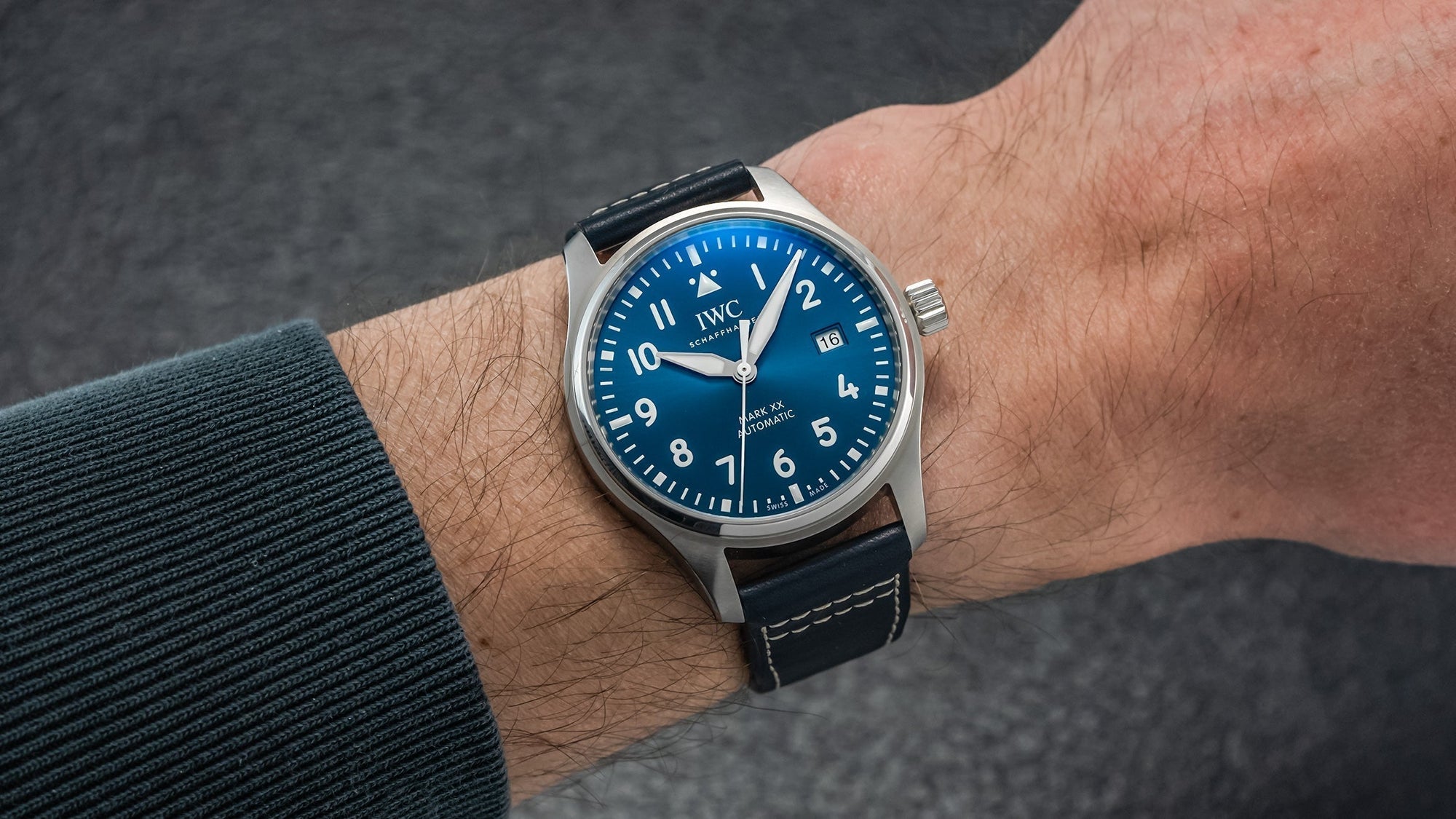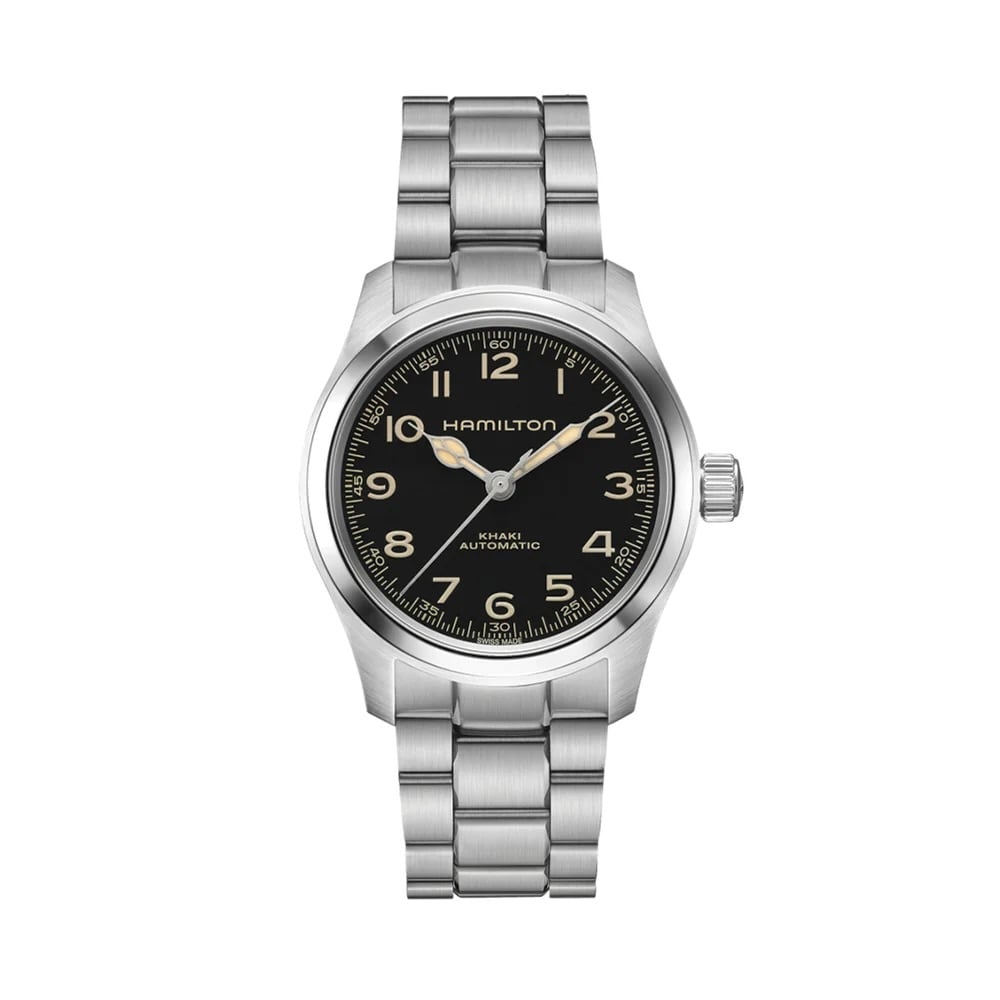The pilot watch genre is a funny thing. These watches are marketed and sold for their connection to history and/or their usefulness within the field of aviation. This history has set a visual identity that defines the genre to this day, with complications like flyback timers and slide rules often featuring heavily. Of course, very few of the owners put these features to use, with fewer still serving as actual pilots. Thus, the pilot watch genre really serves as more of a vibe than any kind of practical watermark. There are exceptions to this, however, and ironically enough, some of the most practical everyday tool watches find themselves with the “pilot watch” designation, and there is perhaps no better example of this than the IWC Mark XX.

The name of the game with any great tool watch is clarity. Ideally, there’s nothing superfluous to cloud the core goals of the tool, with a premium placed on simple legibility. One of the strongest templates based on this ethos is the IWC Mark XI from the late ‘40s. It wasn’t the first IWC Mk watch, but it is the one responsible for casting a die that persists to this day in the form of the Mk XX. There are important distinctions, which I’ll get to, but the underpinnings of the modern Mk XX collection are built on the same general formula that made the Mk XI great: it’s easy to use, easy to understand, easy to wear, and is exactly as stout as it needs to be.

IWC enjoys a highly developed design language for its range of pilots’ watches, and while there are references with more bells and whistles, the Mark XX still serves as the soul thanks to its highly focused design and clarity of purpose. While an argument could certainly be made for the classic Big Pilot’s Watch here, I’d submit that the Mark XX is far more accessible and approachable, making it a more relevant option for more people. Sure, it lacks some of the character of the Big Pilot, but the Mk XX shares just as much historical significance, so it'll really come down to the features that matter to you. And there’s no getting around the fact that Mk XX is simply a more wearable design, day in and day out.
With that, let’s take a closer look at exactly what makes the Mk XX so compelling all these generations later.
Case

The case of the Mk XX is about as classic as they come. In total, it’s changed surprisingly little over the years, other than growing from 36mm to its current 40mm diameter. I want to note here that I strongly feel a 36mm variation would be a great addition to the modern Mk XX collection. As more brands lean into the idea of embracing a range of sizes, I hope that IWC will take this move into consideration. In fact, it’s a move the brand has already made in the Big Pilot range, so it feels like a natural extension of that.

As mentioned, the design of this case is classic in the best of ways. The lug flows organically from the case, and it features a no-nonsense, uniform brushed finish throughout, save for a small polished bezel. The bezel piece may have been absent on the original examples, but the rest of it carries the same straightforward, just-out-of-the-stamp kind of quality to it that really brings the design together. The polished bit was introduced with the introduction of the Mk XV in 1999, the watch responsible for bringing the Mk series into the modern era, succeeding the Mk XII of the mid-‘90s.

The case of the Mk XV took things into a more refined direction, and connected the watch with a broader audience in the process. Visually, it felt like a big step up, though, somewhat ironically, this is also where the brand moved away from the Jaeger-LeCoultre Caliber 889/2, and into an ETA-based 2892 movement. Because of this, the Mk XII is highly collectible by some enthusiasts, but without making this move with the Mk XV, we may not have a MkXX at all today.

The MkXX is an evolution of the steps taken with the MkXV, and certainly feels more refined than the examples from the ‘90s and prior. But it walks a fine line, and never wanders into “fancy” territory. This still feels like a straightforward tool in every sense of the word; it’s just pretty well buttoned up in terms of fit and finish. It also boasts a 100- meter depth rating. Notably, the MkXX measures 10.8mm in thickness, and feels well proportioned all around. This is an easy watch to get along with on the wrist, more on which later. The MkXX is generally offered as a steel watch, though titanium examples do exist, and the brand has even used its proprietary Ceratanium material here for limited editions.
Dial

The dial is where the personality of the MkXX really comes to life, and unsurprisingly, it largely follows the same formula as its predecessors. Every hour is clearly represented in Arabic numeral form, save for the 3 o’clock marker, which is replaced by the date aperture, a complication that was added with the MkXII. The perimeter of the dial is fully indexed to the minutes, and IWC’s triangle beset by two dots takes up residence at 12 o’clock in lieu of the number itself.

It’s a simple dial that places an emphasis on at-a-glance legibility. There is nothing present here that is not in service to that goal of precision and simplicity. This is a dial at its best when appearing in matte form, if you ask me. The application of a sunray finish may elevate the vibe a bit, but it runs counter to the original ethos of this watch, and only gets in the way of legibility. There are a myriad of dial options now, but the base white and black options feel the most at home.

Finally, the most controversial element of the dial are the hands, which made the change to a broadsword design with the MkXVI. The original design of the hands used a pencil shape, with a squared off tip found on the hour hand, which was a very unique approach, and one that set them apart from nearly every other manufacturer out there. The decision to move to a set of broadsword hands brings a much larger personality to the watch as a whole as compared to the relatively demure pencil hands. Personally, I far prefer the older design to the broadsword hands, but IWC is known to use the old-school design in its so-called “Tribute” models.
Movement

IWC has used a range of movements in this series throughout its history, and the current MkXX generation uses the brand’s own Caliber 32111. This is IWC’s base time-and-date caliber that can also be found in the likes of the new Ingenieur, as well as the Portofino and Aquatimer collections. It’s a robust movement with 120 hours of power reserve, and while it is decently decorated, it sits behind a closed caseback here, which suits the overall theme of the watch just fine.
The 32111 resides in the 32000 family of movements manufactured by Richemont’s Val Fleurier for IWC. It shares many similarities with the ETA 2892, though it is manufactured entirely by Val Fleurier without the use of an ébauche. Most importantly, it’s got some years under its belt as a solid workhorse movement for the brand, and the MkXX finally brought it into the pilot collection. It’s not fancy, but it doesn’t need to be. The screw-down crown is easy to negotiate and the power reserve is impressive for its size, so it does exactly what it needs to do here.
Strap/Wearability

The IWC Mark XX is what you could refer to as a “strap monster,” and IWC certainly has plenty of straps that will work with it that now use the brand’s EasX-CHANGE system. However, the best option for this design, to my eye, is the “brick road”-style bracelet that harkens back to the original. This newest version of the bracelet does get polished center links, unfortunately, but that’s an easy fix with wear and tear. This bracelet is silky on the wrist, and makes an already very comfortable watch all the more wonderful on the wrist.


Straps work quite well here, as do third-party nylon units. Really, it’s difficult to go wrong, especially if you opt for the base matte-black or -white dial. I want to commend the EasX-CHANGE system that IWC uses, not just because it’s simple to use, but also because it works around a normal spring bar, which means you can still fit your own straps to the watch, or use passthrough options. Some of these proprietary systems can lock you into their system when it comes to straps, but not IWC’s.
Conclusion

The IWC Mark XX enjoys an enviable history, and manages to preserve much of it in modern form. It does make some sacrifices in the process, but the return is an all-around more premium experience. This isn’t your typical pilot’s watch, and it never has been, and that’s exactly what makes it so special today. This is a highly focused design that hasn’t aged a bit since the ‘40s, and IWC has done well to keep that soul alive and well.





















































0 Comments